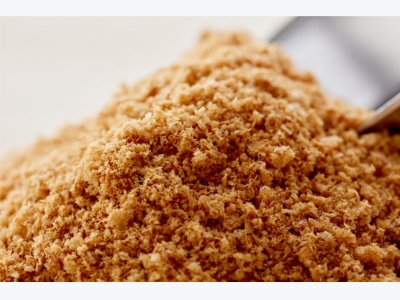Fishmeal supplies look promising short-term, but long-term solution must be found

A new report from Rabobank shows that international fishmeal supplies are stabilizing, calling into question the current growth strategies for the alternative protein market.
Rabobank’s latest report, which looks at the current state of the global market for fishmeal, finds that after three years of low supply of Peruvian anchovy, the harvest has improved this year. The study found this is due primarily to the absence of El Niño, a warming of the sea surface temperature that occurs every few years in the central-east equatorial Pacific and which impacts the geographical distribution of fish stocks.
An increase in the anchovy harvest has led to an improved supply of fishmeal and fish oil, and this trend is expected to continue in the short-term, although volatility on price is never far from the horizon.
According to the report’s authors, Gorjan Nikolik and Beyhan de Jong, aquaculture production now consumes 70 percent of total fishmeal production and 73 percent of fish oil production. Pig production accounts for 22 percent of the fishmeal market and chickens for a further 6 percent, and direct human consumption accounts for 21 percent of the fish oil market.
Data from the Food and Agriculture Organisation of the United Nations (FAO) shows that two-thirds of global aquaculture is currently based on extensive farming, which uses little feed. However, it is intensive farming of species such as salmon, shrimp, catfish, tilapia, seabass, and sea bream that creates much of the demand for fishmeal and fish oil. Nikolik and de Jong expect newer species including bluefin tuna, Amazonian species and cobia to lead future demand in this sector, which is predicted to have a compound annual growth rate of 6 percent through 2020.
“The trend in intensification of fish farming drives the need for more formulated feed. In addition, most of the new farmed species are carnivores, which increased the demand for fishmeal and fish oil even more” Nikolik and de Jong said.
Global capture fisheries have been stagnant since the 1980s, and fishmeal supply declined to a low of 4.2 million metric tons (MT) in 2016 from a high of around 7 million MT in 2000. Supply has been affected by poor harvesting practices and increasing use of small pelagic fish for direct consumption, as well as climatic conditions, notably El Niño, the authors said. Supply is now expected to stabilize, but further growth in pelagic fish landings is not expected in the long term due to quota restrictions.
Demand from the aquafeed industry has risen steadily during this time, and despite the feed industry decreasing the amount of fishmeal in feed from around 70 percent in the 1990s to its current 25 percent, there remains a disparity between anticipated supply and future demand. Fishmeal free feed has been trialed by the big feed companies, but consensus amongst those in the industry is that it still does not currently provide the optimum diet for fish.
The market has fulfilled part of the protein requirement through increased use of trimmings from fish for human consumption, plant-based protein sources, and processed animal protein and animal by-products, such as feather meal and blood meal. The regulations vary from country to country and such alternatives are not accepted universally, complicating market supply.
Many working in the fishmeal industry are now working on finding alternatives to animal-based protein. The most promising leads in this category are in bacterial and insect-based protein sources, and algal oils. Considerable effort and funds are going into finding alternatives and new companies are being encouraged to enter the field through initiatives such as the F3 Fish-Free Feed Challenge.
Commercial scale examples of companies already producing novel proteins include a Brazilian joint venture between TerraVia and Bunge to create a large-scale algae oil producing plant, and Calysta’s FeedKind Aqua, for which Cargill has invested in the creation of the world’s largest gas fermentation plant in Memphis, Tennessee.
Calysta’s FeedKind Aqua, Unibo’s UniProtein and Mango Materials all use methane gas as feedstock to produce bacterial bioprotein. KnipBio uses ethanol and methanol, and Oakbio’s Novo Nutrients uses carbon dioxide and waste carbon. A major advantage of such protein sources is that production is sustainable, uses little water and no agriculture land, and does not complete with the human food chain.
Nikolik and de Jong found that insect protein is potentially one of the most sustainable sources of alternative feeds, but that greater investment is needed to reach commercial scale. Protein sources include black soldier ants, mealworms, grasshoppers, and crickets.
Regulatory barriers have held up incorporation of insect protein in feed, but their use in aquafeed has been approved by the European Union beginning in July 2017. FDA approval is in progress.
“Considering the presence of several alternative protein projects globally, we can make a very rough estimate of an additional 500,000 MT of high-quality alternative feed protein by 2022,” Nikolik and de Jong said. “With the contribution of the rest of the industry from wild catch and fish trimmings, total fishmeal supply can reach 5.4 million MT in 2022.”
Có thể bạn quan tâm
 Vietnam seeks to raise tuna exports to Japan
Vietnam seeks to raise tuna exports to Japan The Vietnam Association of Seafood Exporters and Producers (VASEP) and local enterprises are seeking solutions to speed up tuna exports to Japan.
 President Trump calls for balanced US seafood trade
President Trump calls for balanced US seafood trade US President Donald Trump has declared June 2017 to be National Ocean Month during a speech in which he promised to bolster global exports
 Vietnam becomes largest shrimp provider in RoK
Vietnam becomes largest shrimp provider in RoK A year after the Vietnam-Republic of Korea (RoK) free trade agreement became operational, Vietnam is the largest shrimp supplier of the RoK